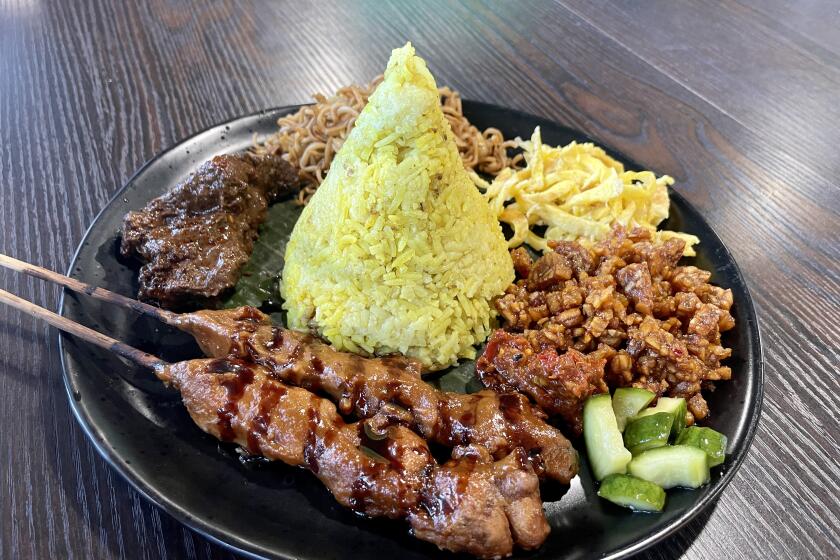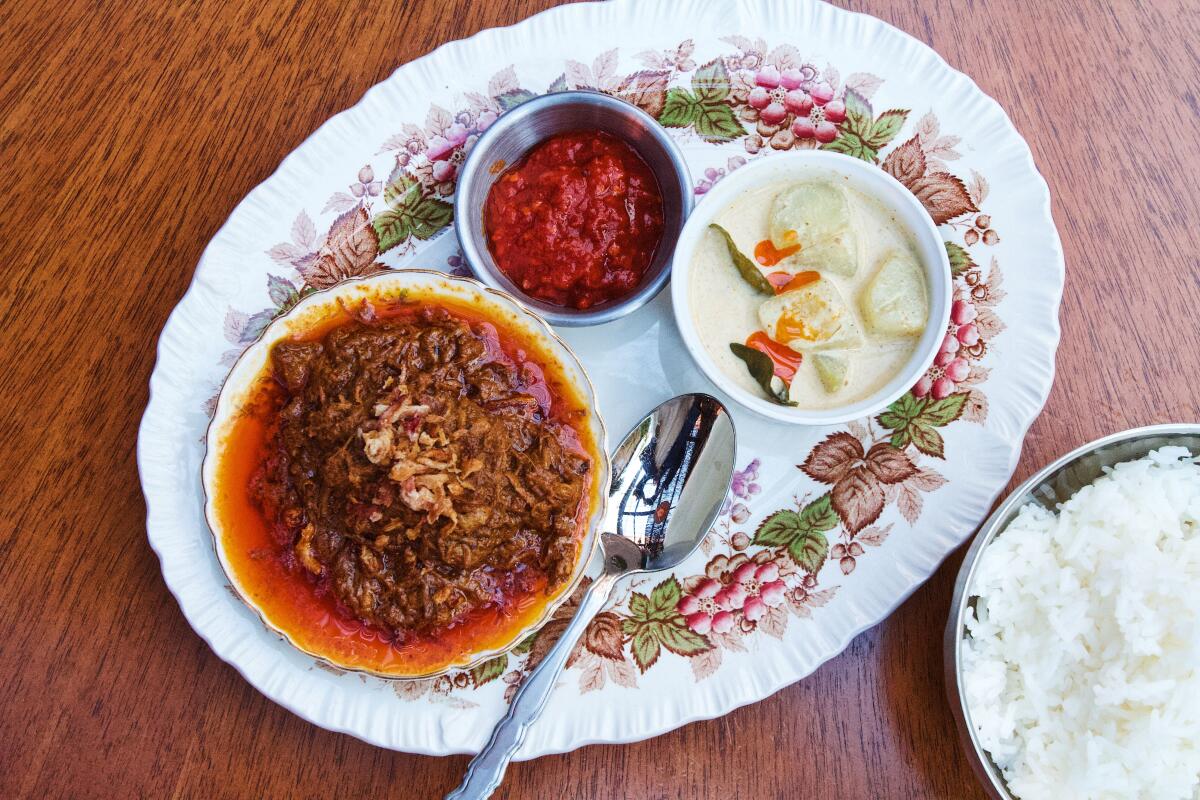
Rendang is Indonesia’s culinary masterpiece. 11 of the best places to get it in L.A.
- Share via
Growing up, the moment I caught the aroma of ground chiles, garlic, ginger, galangal and other spices sizzling in hot oil, I knew my mother was making rendang. Preparing this fragrant Indonesian dish is no easy feat, requiring a melange of ingredients to create a rich, full-bodied dry curry. It’s steeped in coconut milk and slow-cooked for hours until the oil from the milk separates to caramelize the meat, rendering it unbelievably tender and enveloping each succulent piece in a spicy, unctuous paste. The flavor is intense, complex, unforgettable — no wonder there were never any leftovers when my mom made it.
“Eating rendang is like enjoying a rich sake where there’s distinct top notes, a robust body and a lingering aftertaste,” says Eric Tjahyadi, owner of Bone Kettle restaurant in Pasadena. “That’s really the best type of rendang — one that takes you to places.”
Originally a method to preserve meat in Indonesia’s tropical climate, it’s also a dish that you can take with you. “Due to its dry nature and natural preservatives like turmeric and coconut, traditional rendang can be stored for several days at room temperature,” says Cobi Marsh, owner of Cobi’s restaurant in Santa Monica.
Two new Indonesian restaurants indicate that the Southeast Asian cuisine is gaining popularity across Los Angeles.
The extended shelf life of rendang was vital for the Minangkabau people indigenous to West Sumatra who created the dish. In this matrilineal society where wealth and property passed from mother to daughter, young men were encouraged to leave the tribe in a rite of passage known as merantau, or wandering. They’d bring rendang with them on their journeys — for both nourishment and a taste of home as they sought knowledge, fortune and new experiences.
To the Minangkabau, rendang is more than a dish or cooking method; it’s part of their cultural identity, a labor of love symbolizing wisdom, patience and perseverance. Despite its widespread availability today, rendang remains a culinary tradition with ceremonial importance. Raised in Surabaya in a Chinese Christian family before moving to Jakarta, my mother recalls visiting neighbors during Lebaran (the Indonesian name for two Islamic holidays, Eid al-Fitr and Eid al-Adha). These gatherings in this predominantly Muslim country saw people of different faiths, both Christians and Muslims, coming together to share in celebration — and rendang was always an important part of the feast.
My mom brought the tradition of rendang with her when she came to California, just as Tjahyadi’s family did when they immigrated. “On holidays in the U.S., we wouldn’t have turkey or ham,” says Tjahyadi. “We’d have rendang. It was our own version of holiday meat.”
With the rise of Indonesian and Southeast Asian restaurants in L.A., I’ve embarked on my own merantau of sorts with my mom, exploring rendang across the city. Just as every region in Indonesia has its own unique style of rendang, each restaurant here offers its own twist. Here’s a guide to some of our favorites — from those honoring tradition to others reimagining it in their own distinct way.

Blasteran
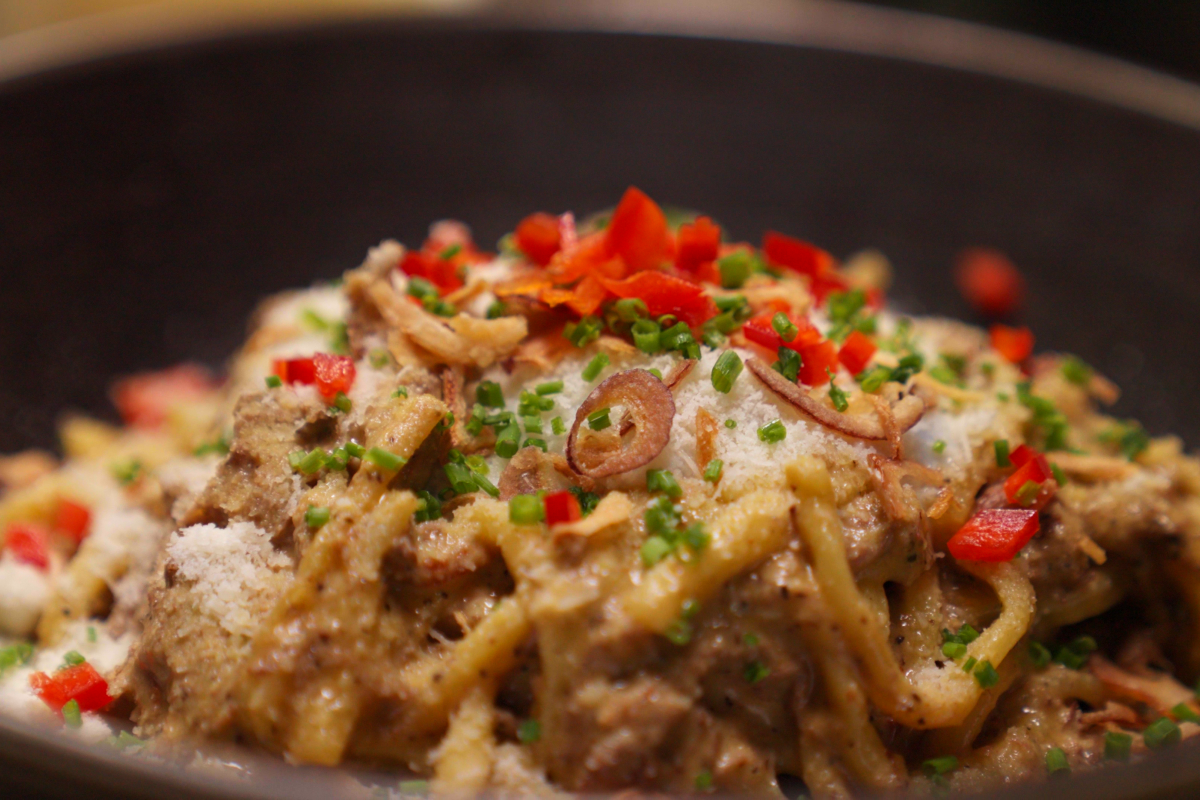
Bone Kettle
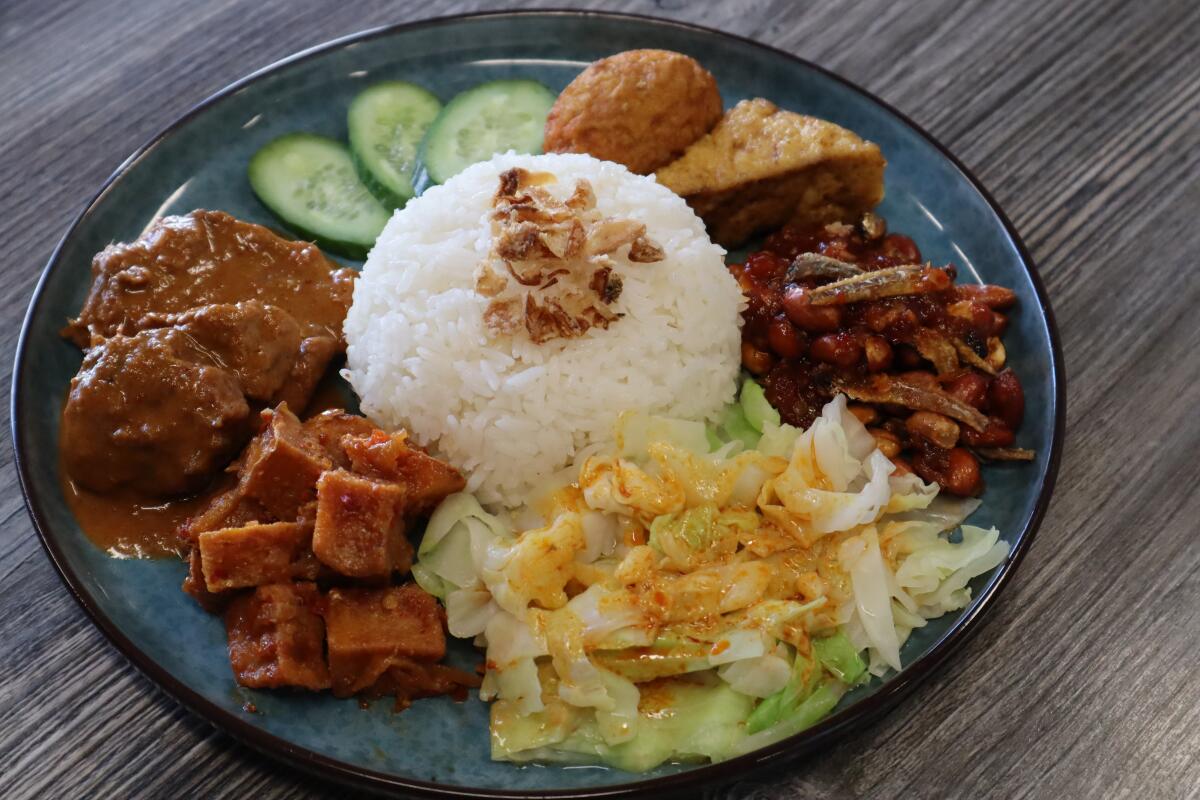
Borneo Eatery
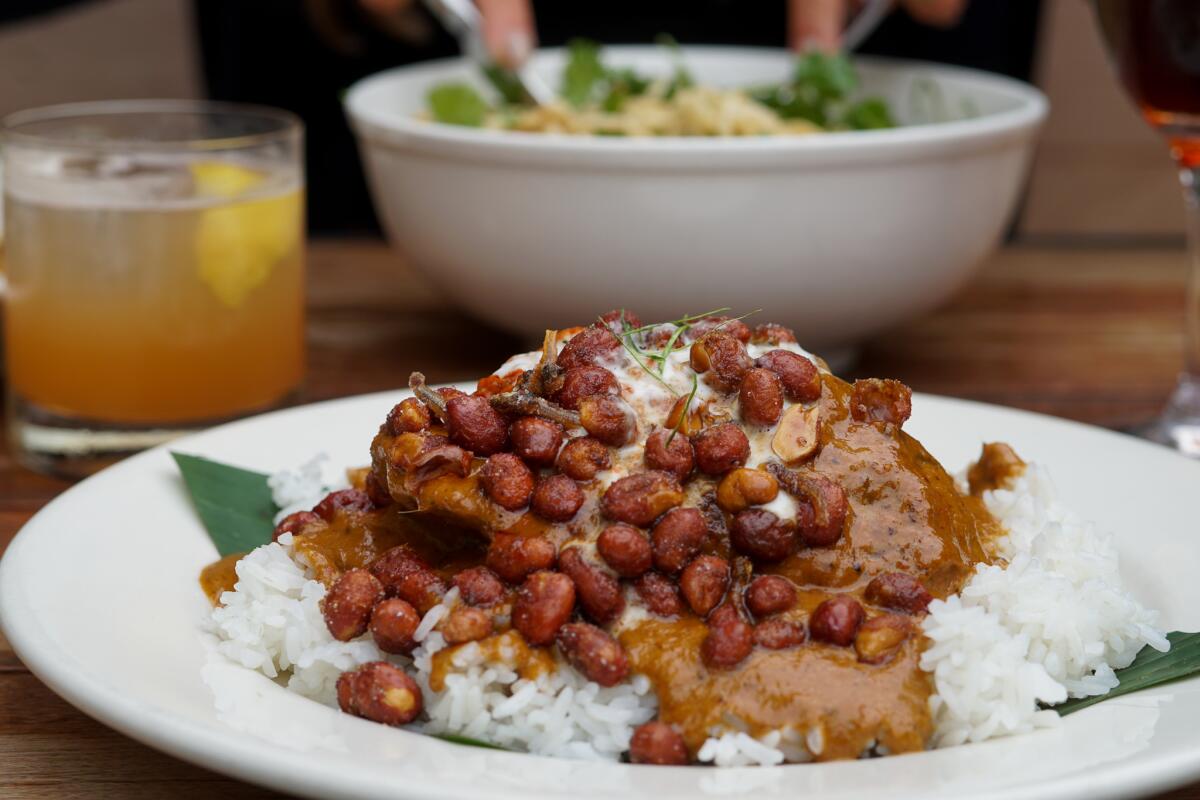
Cassia
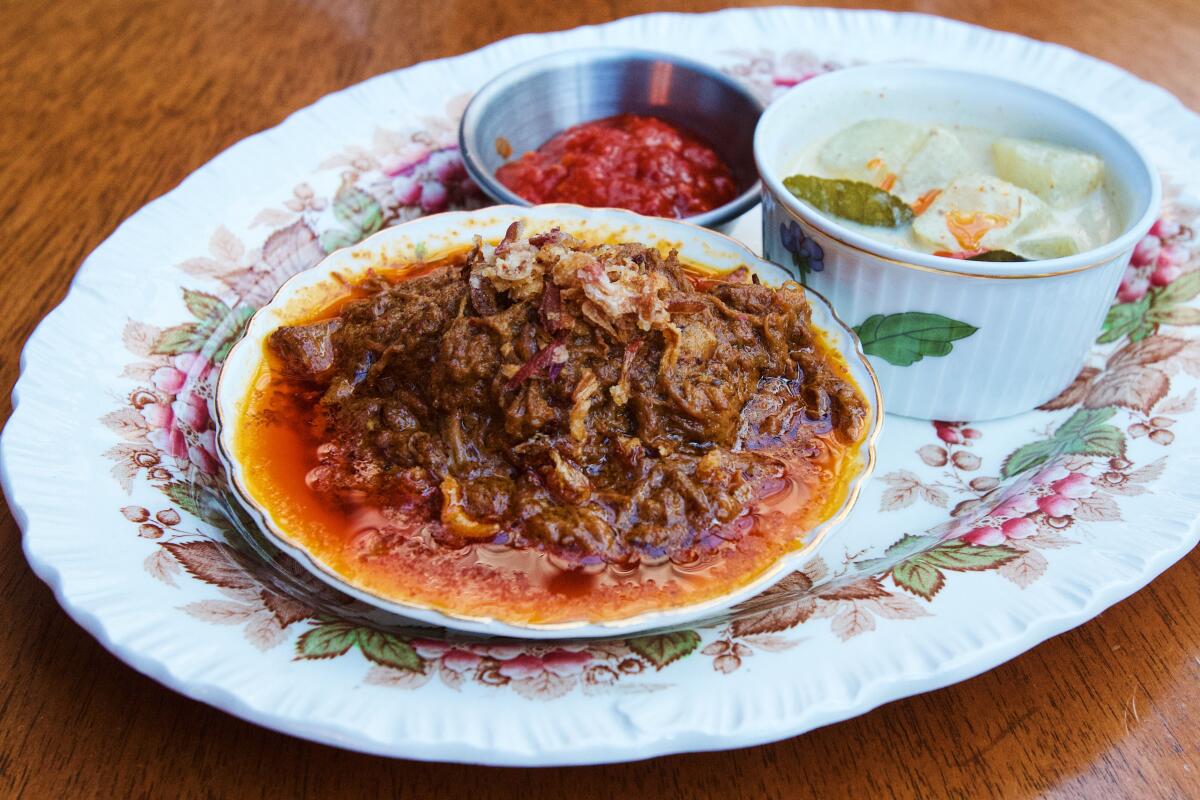
Cobi's
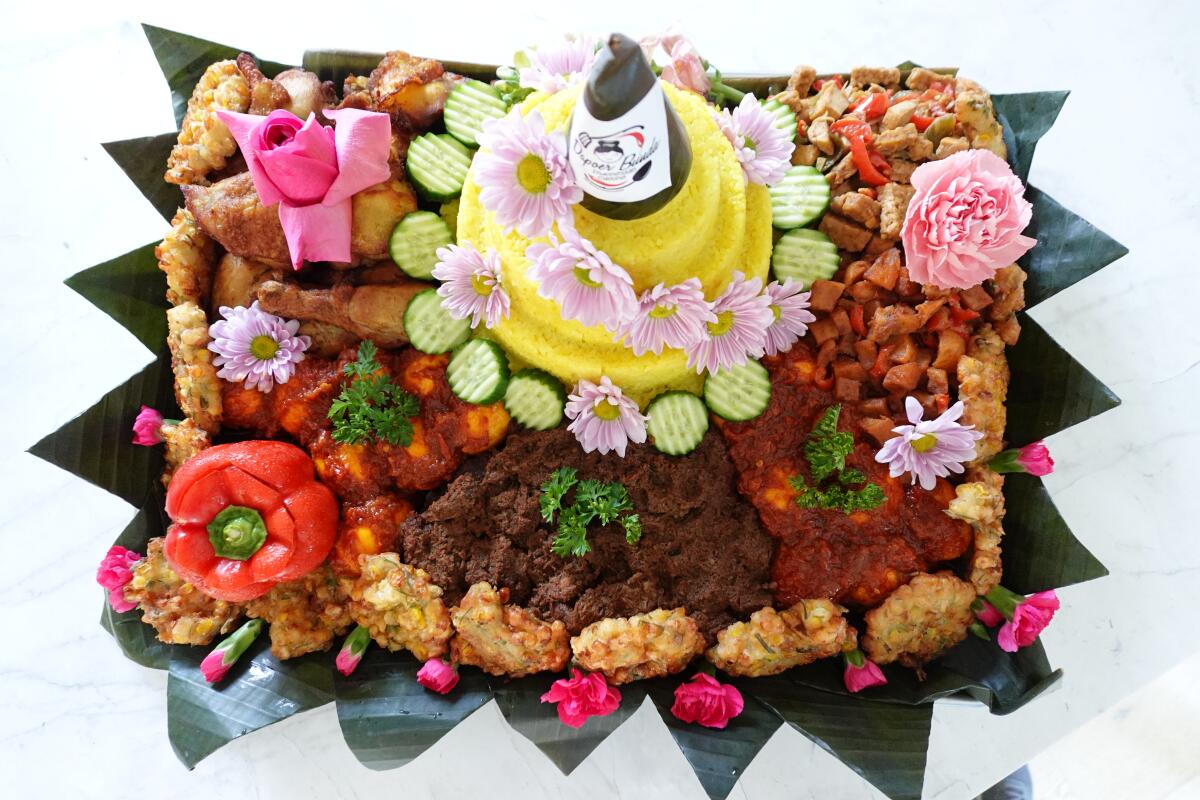
Dapoer Bunda
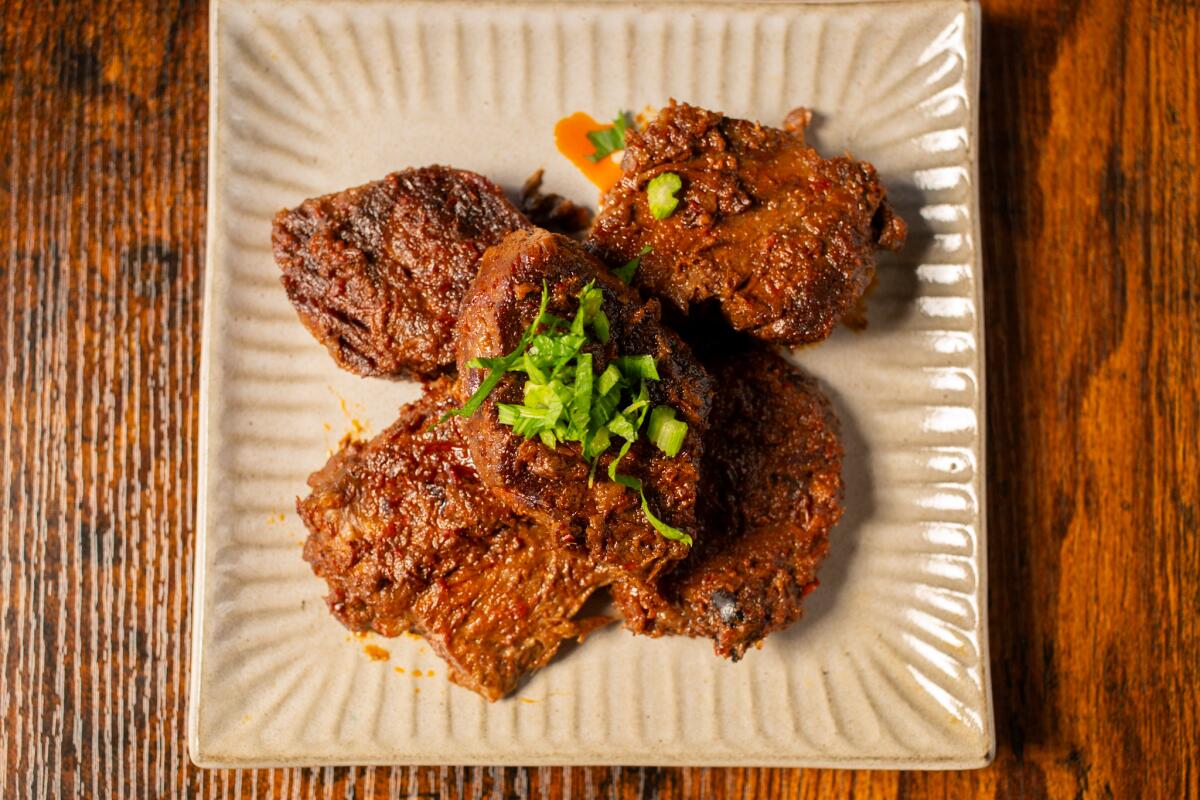
LaaLaaPan
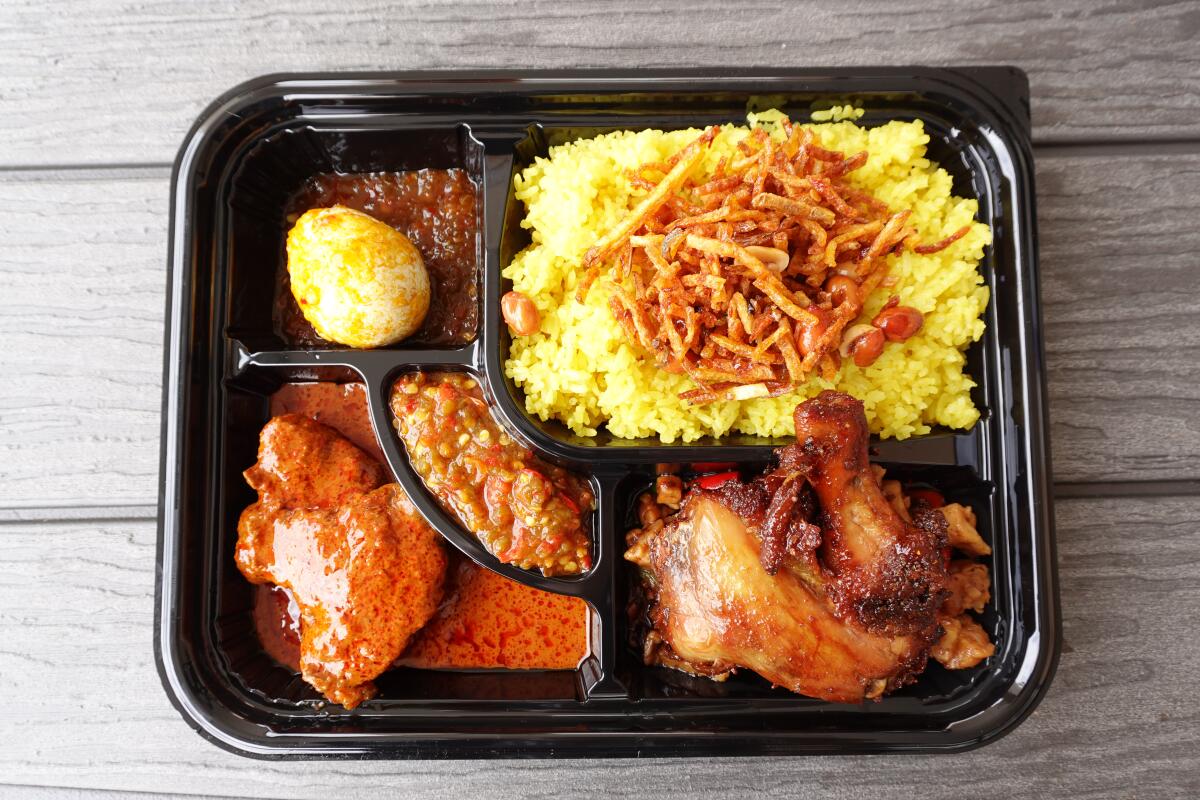
Medan Kitchen
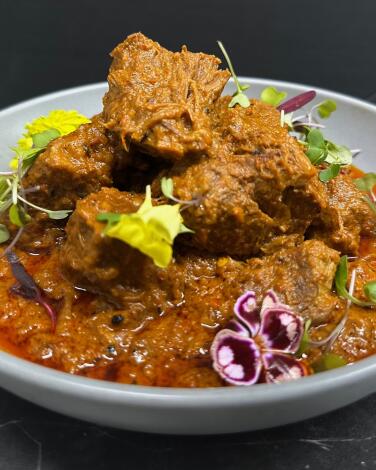
Simpang Asia
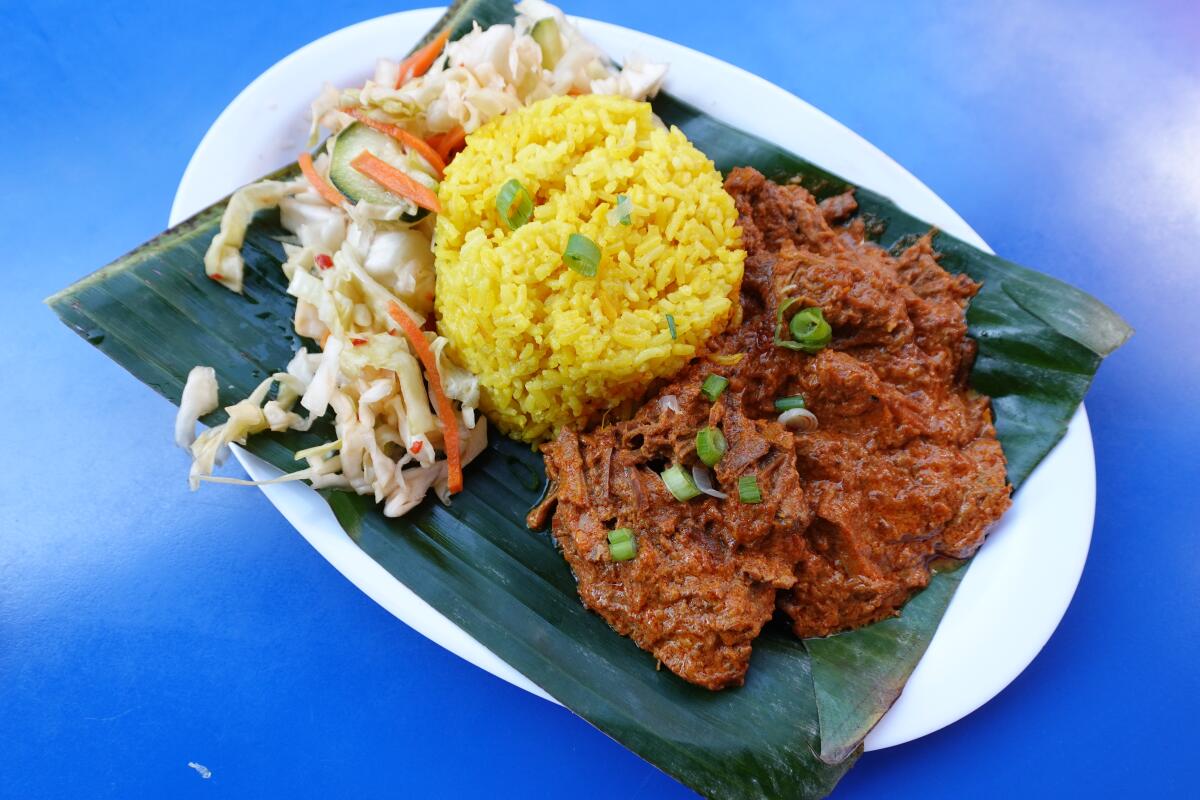
Singapore’s Banana Leaf
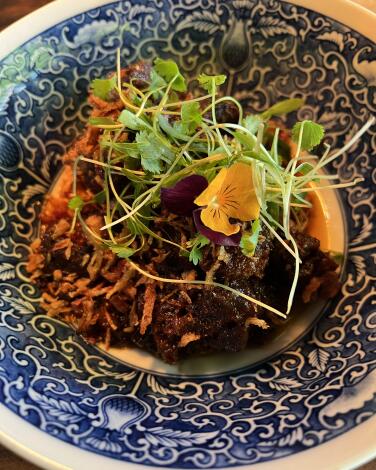
Wallflower
Eat your way across L.A.
Get our weekly Tasting Notes newsletter for reviews, news and more.
You may occasionally receive promotional content from the Los Angeles Times.
